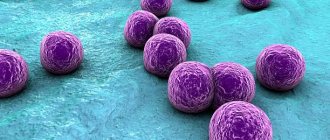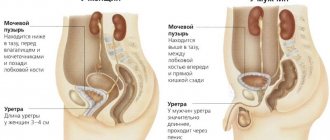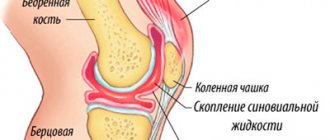August 6, 2021
2729
Prevention
Genes are the basis of heredity. Sections of DNA are inherited from parents and determine what a person looks like. Sometimes genes mutate and the heir develops genetic diseases. It is very important to know exactly how to identify pathologies in the early stages. After all, most diseases of this type cannot be cured, but require maintenance therapy.
What are hereditary diseases?
Hereditary diseases are diseases caused by gene or chromosomal mutations. Humans have between 20,000 and 25,000 genes. A genetic mutation occurs when one or more genes change. If this genetic change is passed on to children, it is an inherited genetic disorder.
If partners have the same carrier status for certain diseases, there is a high risk of having a child with a hereditary disease. If you don't show symptoms, you can still be a carrier and pass the mutations on to your children.
“When I passed the test, life became calmer”: how gene analysis is useful for our clients
Many genetically determined diseases do not appear immediately after birth, but after some time. Congenital diseases caused by intrauterine damage, such as infection or external influences, should be distinguished from hereditary diseases.
Hemoglobinopathies and enzymopathies
Basically, genetic hereditary diseases with violations of structural proteins have an autosomal dominant inheritance pattern. As a result of such gene mutations, hereditary diseases develop that provoke an immunodeficiency state. At the same time, severe hereditary diseases are especially difficult in the presence of agammaglobulinemia, when it is combined with the complete absence of the thymus gland. Of the hemoglobinopathies, sickle cell anemia is the most common. This disease is characterized by the formation of hemoglobin with an abnormal structure. The causes of hereditary diseases such as sickle cell anemia are the replacement of glutamic acid residues with vanillin fragments. These changes are the result of serious mutations at the gene level. After sickle cell anemia was first described, scientists began to even more actively study the signs of hereditary diseases, which are based on one or another pathology of hemoglobin formation. The main goal of research is to find methods through which effective prevention of hereditary diseases could be carried out.
How do hereditary diseases differ from congenital disorders?
Genetic diseases result from changes in one or more genes and may or may not be passed on through generations.
All hereditary diseases are of genetic origin, that is, they are the result of changes in one or more genes and are passed on from generation to generation. Symptoms may not appear since birth.
Congenital disorders may or may not be hereditary, and symptoms may appear from birth. But their appearance is not necessarily related to genetics.
Multifactorial genetic diseases
Multifactorial genetic diseases are pathologies that arise from a combination of genetic predisposition and environmental influences. A simple example: a patient is predisposed to lung cancer + has been abusing smoking for several years. Accordingly, the risk of developing the disease increases by 2 or more times.
The most common multifactorial diseases include psoriasis, liver cirrhosis, rheumatoid arthritis, coronary heart disease, and bronchial asthma.
Types of hereditary diseases
Hereditary diseases are divided into chromosomal, genetic and mitochondrial.
Chromosomal diseases
Currently, about 1000 forms of chromosomal diseases have been described. Chromosomal diseases result from changes in the number or structure of chromosomes. They are characterized by common features: low body weight and length at birth, retardation in mental and physical development, delay and abnormalities of sexual development, etc.
Chromosomal diseases are rarely inherited. And in more than 95% of cases, the risk of re-birth in a family of a child with a chromosomal pathology does not exceed the general population level. Chromosomal diseases with abnormalities in the number of chromosomes include: Patau syndrome, Edwards syndrome, trisomy 8 syndrome. And chromosomal diseases with abnormalities of chromosome structure - DiGeorge syndrome, Wolf-Hirschhorn syndrome, “cry the cat” syndrome, Alfie syndrome, Orbeli syndrome.
Monogenic diseases
Monogenic diseases result from DNA damage at the gene level. The number of monogenic diseases, according to some estimates, reaches 5000.
Among the signs of monogenic diseases one can highlight: various forms of mental retardation, hearing and vision defects, skeletal dysplasia, diseases of the nervous, endocrine, immune and other systems. The most well-known monogenic diseases include cystic fibrosis, hemophilia A and B, Gaucher disease, Duchenne/Becker muscular dystrophy, spinal muscular atrophy, and color blindness.
Severe monogenic diseases can be identified using prenatal diagnosis, as well as by determining the presence of mutations in parents using a genetic test.
The most interesting thing for me was to learn about the features of metabolism. That is why I chose the Atlas: only here there is a fairly voluminous section on this topic. For example, all my life I have struggled with weight, migraines, neck and back pain, and anemia.
What can you learn from a genetic test?
Mitochondrial diseases
Mitochondrial diseases are caused by genetic, structural, and biochemical defects in the functioning of mitochondria, which lead to disruption of tissue respiration.
Mitochondria contain their own DNA. And diseases caused by mutations in mitochondrial DNA are inherited exclusively through the maternal line. If a mitochondrial disease was inherited this way, there is a 100% chance that every child in the family will inherit it.
Symptoms may include: growth disturbances, muscle weakness, autism, mental disorders, breathing problems, hearing problems and vision problems. Examples of mitochondrial diseases: Leigh syndrome, Wolff-Parkinson-White syndrome, Leber hereditary optic neuropathy and others.
Polygenic or multifactorial diseases
There are also diseases with a hereditary predisposition, which are called multifactorial or polygenic diseases.
Multifactorial diseases are caused by hereditary risk factors, and to a large extent by unfavorable environmental influences. Multifactorial diseases include most chronic diseases, including cardiovascular, endocrine, immune, neuropsychic, oncological, etc. For example, bronchial asthma, diabetes mellitus, rheumatoid arthritis, hypertensive heart disease, etc.
Gene mutations
Gene (point) mutations are those that arise as a result of changes in the chemical structure of a gene and represent the replacement, deletion or insertion of a nucleotide. They occur more often than chromosomal and genomic ones, but they change the DNA structure to a lesser extent. Gene mutations also include translocations (transfers), duplications (repetitions), inversions (180° flip) of gene sections, but not chromosomes.
Example 1:
Consider the mutation GTT CCC GGT → GTT CCC GGT.
In the first triplet, thymine was replaced by cytosine. The GTT and GTC triplets encode glutamic acid, so this mutation did not cause changes in the protein structure: glu-gly-pro → glu-gly-pro.
In other cases, a nucleotide substitution can change the order of amino acids in a protein molecule and lead to phenotypic consequences.
Example 2:
GTT CCCC GGT → GTG CCCC GGT.
In the first triplet, thymine was replaced by guanine. GTT encodes glutamic acid, and THG encodes histidine. Accordingly, the primary structure of the protein changes: glu-gly-pro → his-gly-pro. There is a high probability of phenotypic changes occurring.
How are hereditary diseases transmitted?
The human body is made up of trillions of cells. Every cell has a nucleus that contains chromosomes. Each chromosome is made up of tightly coiled strands of deoxyribonucleic acid (DNA).
Genes are instructions for assembling proteins in our bodies that determine specific traits in each person, such as eye or hair color. Most cells in the body typically contain 46 chromosomes, organized into 23 pairs. Each of these 23 pairs has one inherited chromosome from the father and one from the mother. Of the 23 pairs, 22 pairs are the same in female and male organisms, and the remaining one determines whether you are a man (XY) or a woman (XX).
Mutations that cause hereditary diseases can have a dominant or recessive inheritance pattern.
Dominant inheritance means that only one copy of a gene—from the mother or father—must have the mutation (or pathogenic variant of the gene) for the trait or disease to occur. And with the recessive type, a person inherits two altered copies of the same gene.
Autosomal dominant pattern of inheritance
With autosomal dominant inheritance of diseases, a genetically determined disease manifests itself if a person has at least one mutated gene, and this gene is not located on the sex (X and Y) chromosomes.
Huntington's disease and Marfan syndrome are two examples of autosomal dominant diseases. Mutations in the BRCA1 and BRCA2 genes, which are also associated with breast cancer, are transmitted through this pattern.
Autosomal recessive inheritance pattern
In autosomal recessive inheritance, both copies of genes are mutated. To inherit an autosomal recessive disorder such as cystic fibrosis, spinal muscular atrophy, or phenylketonuria (PKU), both parents must be carriers. The child inherits two copies of the defective gene, one from each parent. For example, people who have one copy of a gene with a mutation and the other without the mutation are called carriers because they themselves are healthy.
X-linked recessive inheritance
In X-linked recessive inheritance, the mutated gene is located on the X chromosome. The disease manifests itself only if a person does not have another X chromosome with a normal copy of the same gene.
Duchenne muscular dystrophy, some types of color blindness, and hemophilia A are examples of X-linked recessive diseases. A man with an X-linked recessive disorder will pass on his intact Y chromosome to his sons, and neither will be affected. If he passes on his X chromosome (with the defective gene) to his daughters, then they will all be carriers of the disease. His daughters may have no symptoms or only mild signs of the disease, but they may pass the mutated gene to their children.
Female carriers of an X-linked recessive disorder often have mild or no symptoms. This is because female carriers have one normal copy of the gene and one mutated copy. The normal copy usually compensates for the defective copy in females, unlike males who have only one X chromosome.
Women who have only one pathological gene pass the disease on average to half of their children, regardless of gender. Women who have two pathological genes pass the disease on to all their children. These diseases include hemophilia A and color blindness.
How genetic testing helps with family planning
If you know or suspect that you or your partner have a family history of a genetic disorder, you can determine it with the Atlas Genetic Test. Genetic counseling can help you learn about treatments, preventive measures, and reproductive options.
Directions of genetic examinations
Today, doctors identify genetic diseases with high accuracy, since advanced technologies make it possible to literally look inside the gene and determine at what level the disorder occurred.
Note: There are already reports in the foreign press that experiments are underway on the use of genome editing methods to combat certain diseases. In particular, the journal Nature mentioned similar experiments in the field of combating HIV[9].
There are several areas of examination.
Diagnostic testing
Diagnostic testing is performed if a patient has symptoms or developmental features that are a hallmark of a genetic disorder. Before referral for diagnostic testing, a comprehensive examination of the patient is performed. One of the distinctive features of hereditary diseases is the damage to several organs and systems[10], therefore, when a number of deviations from the norm are identified, the doctor refers the patient to molecular genetic diagnostics.
Since many hereditary diseases (for example, Down syndrome, Edwards syndrome, Patau syndrome) are associated with a violation of the number of chromosomes (karyotype), karyotyping is carried out to confirm them, that is, the study of the number of chromosomes. The test requires blood cells that are grown in a special medium for several days and then stained. So doctors isolate and identify each chromosome, determine whether their quantitative composition is disrupted[11], and note the features of their external structure.
To identify mutations of specific genes, the PCR method is used - polymerase chain reaction. Its essence consists in isolating DNA and repeatedly reproducing the area of interest to the researcher. As experts note, the advantage of PCR is its high accuracy: it is almost impossible to get a false positive result. The method is also convenient because any tissue of the body can be taken for research [12].
Prenatal and preimplantation diagnosis
If you know that there have been cases of hereditary diseases in your family or in your spouse’s family, then, of course, you will want to find out what the likelihood is of their manifestation in your children. Doctors often suggest that expectant parents do prenatal diagnostics. And if the couple uses assisted reproductive technologies, then preimplantation genetic diagnosis of the fetus (PGD).
PGD should be done if the mother’s age exceeds 35 years, if the couple has already had interrupted pregnancies, and if children were born with hereditary diseases. Doctors also recommend doing PGD if the parents are carriers of a genetic disease. In this case, there are cases of pathology in the family, but the spouses themselves are healthy. But the probability of a child developing the disease can reach 50%, and PGD helps to accurately determine this indicator. The test is performed when the in vitro embryo grows to the 6 or 8 cell stage [13].
Prenatal genetic diagnosis is carried out while the baby is still in the womb. The doctor can assume the presence of genetic abnormalities based on blood tests of the mother or ultrasound results of the fetus. Therefore, at the initial stage, a pregnant woman undergoes three-marker screening: the level of AFP, β-chorionic gonadotropin and estriol is determined in her blood. If their concentration is different from the norm, the doctor recommends a genetic examination of the child. To do this, amniotic fluid is taken using a puncture and karyotyping of the fetus is performed. The only drawback of this method is the long waiting period for results. If the latter is negative, then the woman simply may not have time to make the decision to terminate the pregnancy. There is an alternative - chorionic villus analysis. It can be done early, but obtaining the material poses a threat to the pregnancy[14].
Recently, another opportunity for prenatal examination of the fetus has emerged - a non-invasive prenatal DNA test (NIPT test). In this case, only the mother's blood is needed. The accuracy of the test reaches 99%, and it is possible to conduct an examination for both the most common genetic pathologies and a complete examination of the fetus[15].
Determination of carrier status
Considering the types of inheritance of genetic diseases, we mentioned the autonomic-recessive method and sex-linked inheritance. A person can be healthy, but a pathological gene is present in his genotype. A carrier test helps identify this. Many people do it at the pregnancy planning stage to calculate the likelihood of having a child with genetic diseases.
For example, a disease such as hemophilia manifests itself only in men; women do not get sick, but can be carriers. Therefore, women who have relatives with blood clotting problems are advised to undergo heterozygous carrier screening before conceiving to determine the likelihood of having a boy with hemophilia[16].
Predictive genotyping
And even if a person does not have any signs of hereditary diseases, he can still undergo genetic diagnosis. For what? The fact is that not all hereditary diseases are determined by genetic disorders alone. There may be a predisposition to many pathologies. Pre-symptomatic diagnosis, or DNA identification, reveals it[17]. In many clinics, this examination is called a “genetic passport”; it is enough to do it once, because the results obtained do not change over time.
Based on the results of DNA identification, the doctor gives the patient recommendations: from lifestyle and diet to occupational risks. Following them helps to avoid the development of many diseases.
How to treat hereditary diseases and how to live with them?
Previously, hereditary diseases were incurable. Nowadays, this still remains a problem for many diseases, but for some of them, treatments have already been found. For example, this applies to diseases associated with metabolic disorders.
In most inherited metabolic disorders, one enzyme is either not produced by the body at all, or is produced in a form that does not work. For example, in the absence of any enzyme, toxic substances may accumulate in the body or a necessary product may not be synthesized - as in type 1 hemochromatosis.
In this condition, the body absorbs too much iron from food and is unable to get rid of the excess naturally. This can lead to excessive iron accumulation in the heart, pancreas and liver.
Treatment of genetic metabolic disorders follows two general principles:
- It is necessary to reduce or eliminate the intake of any food or medicine that is not absorbed by the body.
- Replace or supplement a missing or inactive enzyme to restore metabolism through diet and/or medication.
There are more serious and common hereditary diseases that have no cure. For example, mecoviscidosis is an accumulation of mucus in the lungs and digestive system. There is no cure for cystic fibrosis, but various methods of controlling symptoms can help prevent or reduce complications and make living with the disease easier.
Cystic fibrosis progresses over time and can be fatal, especially if there are co-infections. Today, thanks to medical advances, about half of people with cystic fibrosis live to be 40 years old. Children born with this disease today may live even longer.
One of the most severe hereditary diseases, spinal muscular atrophy, has also recently been treatable using gene therapy. But this method is not available to everyone. The drug for the treatment of SMA is the most expensive drug in the world.
Treatment or relief of genetic diseases became possible thanks to the international Human Genome project to study and map human genes; a breakthrough occurred in the diagnosis and treatment of hereditary diseases. The results of the project help not only to find genes in which mutations lead to diseases, but also to diagnose them with maximum accuracy.
Types of human genetic diseases and key methods for their detection
Depending on what causes the genetic disease, the doctor chooses methods of examining the patient. Let's consider the main groups of pathologies.
Chromosomal diseases
The cause of these genetic diseases is a violation in the quantitative composition of chromosomes or in their structure. For example, if there is an additional (third) chromosome 21, Down syndrome is formed. The cause of Shershevsky-Turner syndrome is the presence of only one X chromosome in women. And if a man has sex chromosomes in the combination XXY and not XY, then he is diagnosed with Klinefelter syndrome.
Many chromosomal abnormalities, such as duplication or tripling, are incompatible with life. Most often, embryos die in the womb, and born children live only a few days[18]. At the same time, there are cases when a person has different types of cells: those that carry pathological chromosomes and those that do not have these disorders. This phenomenon is called “mosaicism”, and then the pathology may manifest itself to a lesser extent or practically not manifest itself[19].
For diagnosis, karyotyping is performed. An example is Klinefelter syndrome, a rare genetic disorder that affects men. Externally, it is expressed in a eunuch-like appearance, enlarged mammary glands, and impaired sexual function. A detailed study of the composition of sex chromosomes helps determine what kind of disorder occurred in the patient (there may be several extra X chromosomes). Depending on the karyotype, the severity of signs of the disease also varies [20].
The structure of chromosomes, and not just their number, may also be disrupted. During the process of cell division, if “something goes wrong,” a part of the chromosome is lost or, conversely, some section is duplicated. The chromosome can turn 180 degrees (inversion), or its ends form a ring. For example, cry-the-cat syndrome is a consequence of a rearrangement of the fifth chromosome. Children born with this pathology scream specifically (the sound resembles the meowing of a cat). They usually die in the first years of life, since the pathology is manifested by numerous malformations of internal organs[21].
Patients with chromosomal diseases are prescribed a cytogenetic examination. Usually parents are also subjected to it in order to establish whether there is an inherited pathology or whether this is an isolated case [22].
Gene mutations
Disturbances can occur not in the chromosome, but only in one part of it. Then we are talking about a gene mutation. These diseases are called monogenic; in particular, they include many metabolic disorders: cystic fibrosis, phenylketonuria, androgenital syndrome, etc. Many of these diseases can be detected during mandatory screening of all babies in the maternity hospital. A child who has abnormalities may be referred for additional genetic testing. And timely measures can in some cases prevent the development of serious violations.
At the same time, there are diseases caused by gene mutations that do not manifest themselves clearly and unambiguously. An example is Wolfram syndrome, which debuts as diabetes mellitus at an early age, then manifests itself as deterioration of vision or hearing. A doctor can confirm the syndrome only based on the results of a genetic examination.
Multifactorial genetic diseases
They are revealed by DNA identification. The analysis confirms the presence or absence of a predisposition to almost any pathology: from diabetes to the formation of various addictions[23]. Since the role of genetic and environmental factors in the development of diseases is different not only for each pathology, but also for each patient [24], recommendations here can only be strictly individual, made on the basis of test results.
Recently, information about rapid tests has often appeared that make it possible to determine abnormalities in the DNA structure directly on the day of analysis. In particular, scientists from Denmark have created a “luminous DNA test” that gives results within six hours[25].









